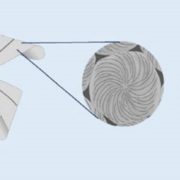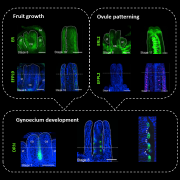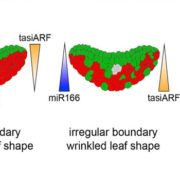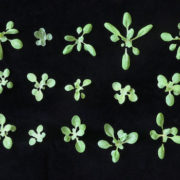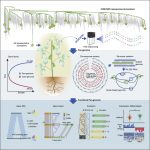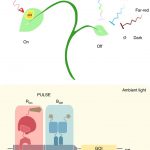Fluctuating auxin response gradients determine pavement cell-shape acquisition (PNAS)
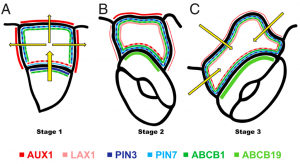 The leaf epidermis is composed primarily of undulated pavement cells arranged in a jigsaw puzzle-like architecture, with neighboring cells flawlessly interlacing with one another thanks to synchronized growth, thus making it an ideal model to study morphogenesis regulation. Seeking to better understand cell-shape acquisition, a recent study by Grones et al. used a subpopulation of leaf epidermal pavement cells known as stomatal lineage ground cells (SLGCs) to address the question of how the formation of lobes in these cells is regulated. By quantifying the outgrowth angle of the first lobe and through the use of an auxin overproduction mutant, the authors determined that lobe outgrowth occurs perpendicular to the stoma (pore) and that this lobe formation is an auxin dose-dependent process. Furthermore, by analyzing auxin response in SLGCs using auxin-reporter DR5 lines the authors showed that auxin response gradients that are fueled by auxin transport, rather than local auxin biosynthesis, regulate lobe formation in SLGCs, and that this gradient shifts dynamically throughout lobe formation due to changes in auxin transporter localization. This paper highlights the importance of dynamic auxin response gradients, how these are controlled by complex auxin transporter localization patterns, and how these processes cooperate to regulate cell shape. (Summary by Jesus Leon @jesussaur) Proc. Natl. Acad. Sci. USA 10.1073/pnas.2007400117
The leaf epidermis is composed primarily of undulated pavement cells arranged in a jigsaw puzzle-like architecture, with neighboring cells flawlessly interlacing with one another thanks to synchronized growth, thus making it an ideal model to study morphogenesis regulation. Seeking to better understand cell-shape acquisition, a recent study by Grones et al. used a subpopulation of leaf epidermal pavement cells known as stomatal lineage ground cells (SLGCs) to address the question of how the formation of lobes in these cells is regulated. By quantifying the outgrowth angle of the first lobe and through the use of an auxin overproduction mutant, the authors determined that lobe outgrowth occurs perpendicular to the stoma (pore) and that this lobe formation is an auxin dose-dependent process. Furthermore, by analyzing auxin response in SLGCs using auxin-reporter DR5 lines the authors showed that auxin response gradients that are fueled by auxin transport, rather than local auxin biosynthesis, regulate lobe formation in SLGCs, and that this gradient shifts dynamically throughout lobe formation due to changes in auxin transporter localization. This paper highlights the importance of dynamic auxin response gradients, how these are controlled by complex auxin transporter localization patterns, and how these processes cooperate to regulate cell shape. (Summary by Jesus Leon @jesussaur) Proc. Natl. Acad. Sci. USA 10.1073/pnas.2007400117


